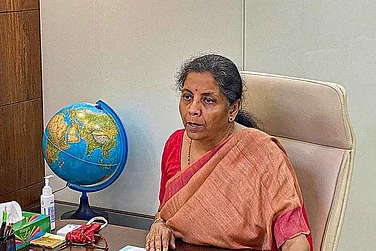Nearly three weeks after the unprecedented and surprising move by RBI to cut the repo rate by 75bps, reverse repo by 90bps, granting forbearance to borrowers, injecting more system liquidity, and offering long-term repos for corporate bond purchases, the yields of the 10-year government securities are on fire. The 10-year rate that had fallen to 6 per cent on the day of the announcement has been hovering near 6.50 per cent levels firming up by nearly 50bps from the bottom. The 10-year G-Sec was trading at 6.22 per cent before the announcement. The impact of COVID-19 on economies across the world is becoming apparent. There is huge pressure on fiscal and monetary authorities to offset some of that damage. This has happened despite overnight inter-bank rates floating in the 1-3 per cent range – much below the reverse repo rate of 4 per cent -- both because of the glut of surplus system liquidity and the inability of financial market participants exploit arbitrage opportunities between the interbank rate and the reverse repo rate. The first state government auction (also known as State Development Loans (SDLs)) for FY21 pushed state bond yields to almost 8 per cent. However, the next auction fared better due to its smaller size. The spread of state bonds over G-Secs is still almost twice the normal level. SDL are more than 300 bps above the policy rate. With SDL rates hardening so much, corporate bond yields will inevitably tighten in tandem.
Advertisement
India saw FPI outflow from the debt markets in March 2020. Banks have now become the mainstay of the fixed income market. Currently, the banks have a lack of appetite to take duration risk as the credit growth is tepid and overall NPAs are high, compounding the issue. Banks have progressively become more risk averse to buying or holding longer-dated bonds. This is to avoid the greater mark-to-market risk that comes from holding duration bonds.
There are concerns of growing heightened fiscal uncertainty, worries about the extra borrowing and scarce secondary market liquidity because of the lockdown. High volatility and mark to market risk make duration unattractive for banks especially public-sector banks. All these and some technical factors may have contributed to the hardening of yields.
Advertisement
Fiscal uncertainty is here to stay, around the world. Policymakers are shooting arrows in the darks as they are not aware of size of the shock, so there is no way to credibly commit on the eventual deficit or borrowing numbers. Similarly, all indications are that the lockdown is likely to continue. Volatility is therefore likely to remain elevated. Fiscal and monetary policy will have to combine astutely to ensure they are being complementary to help ward-off the greatest global shock since the Great Depression.















 Just one email a week
Just one email a week